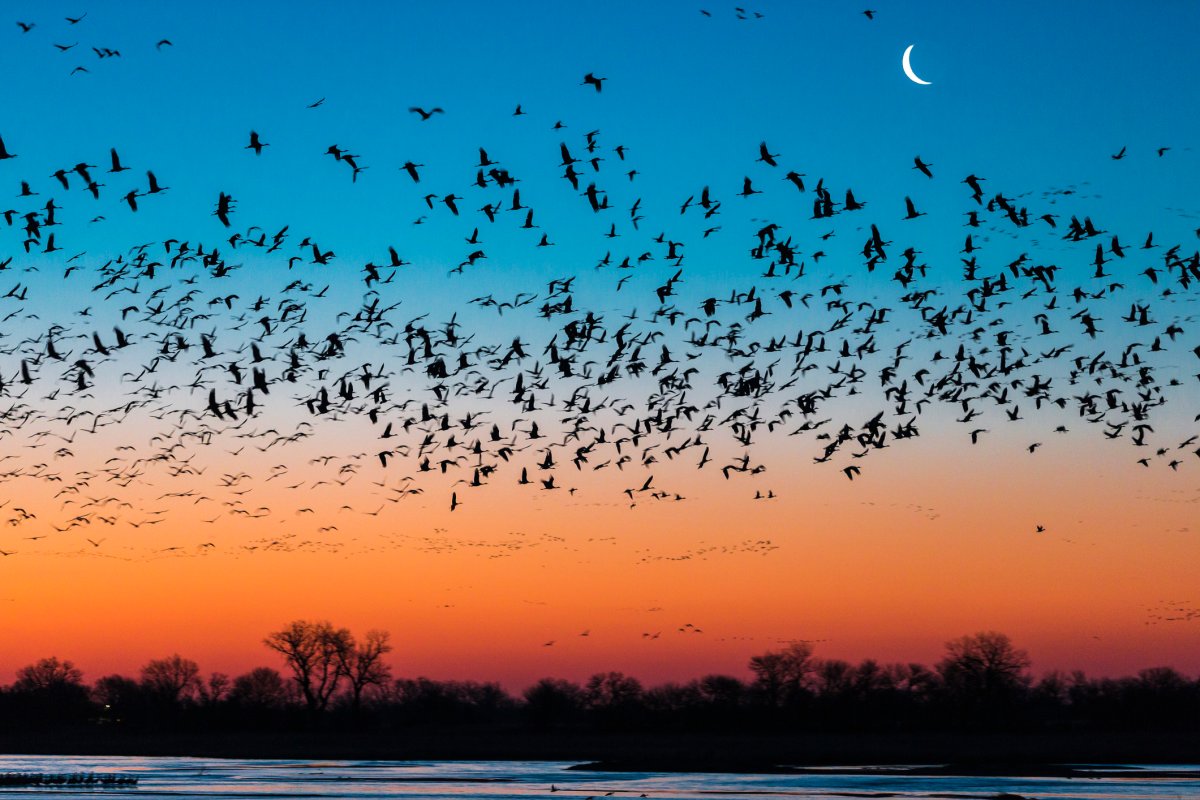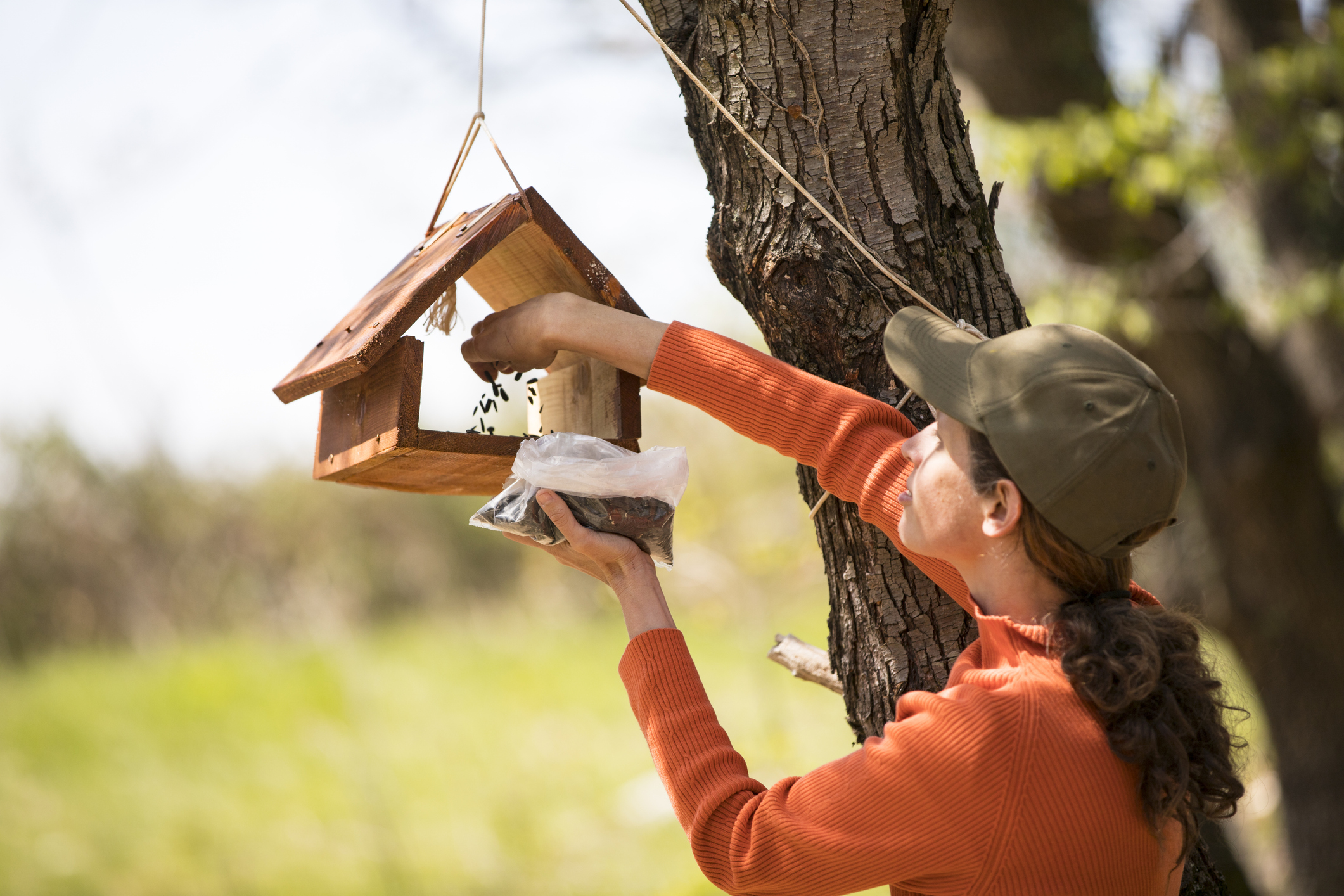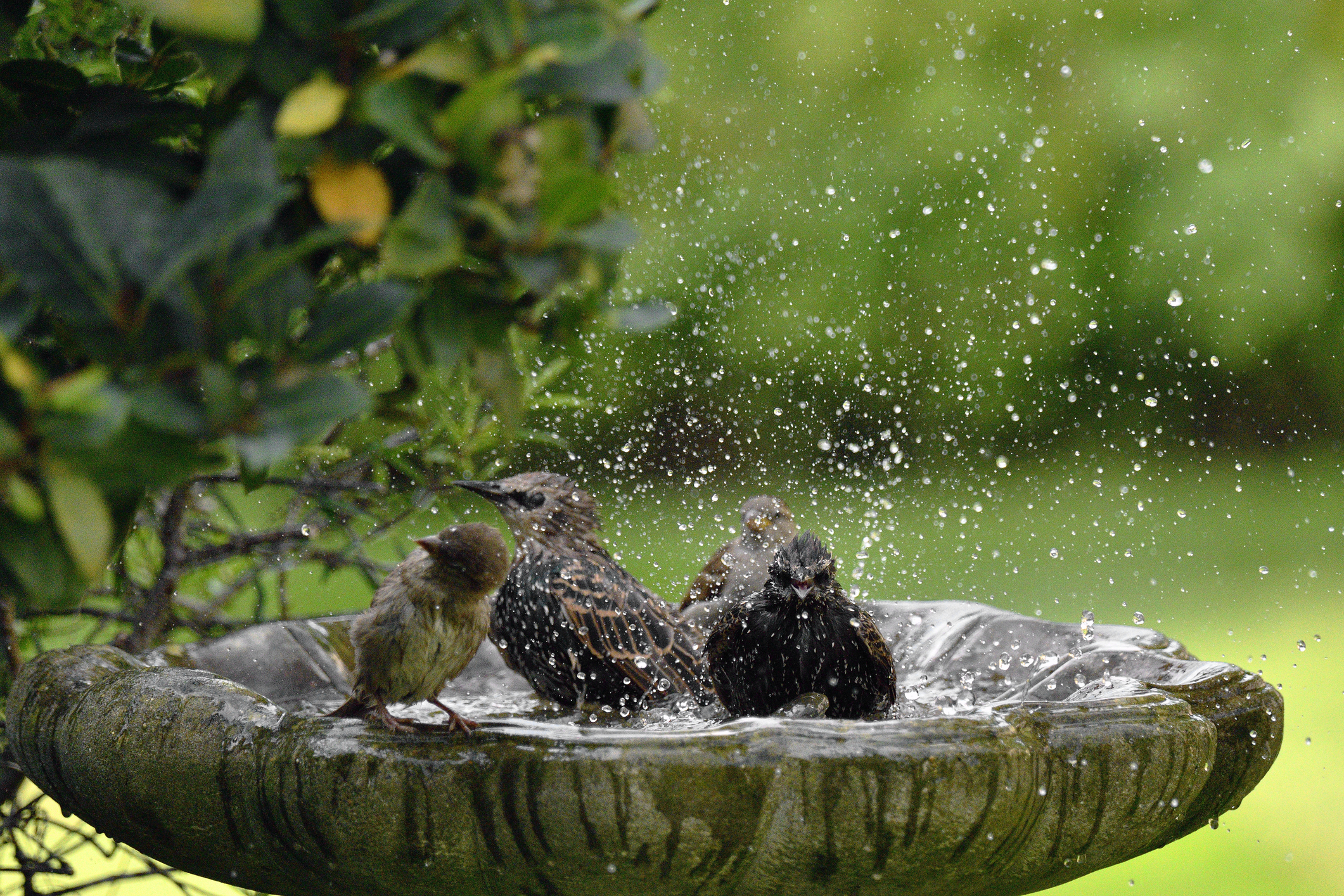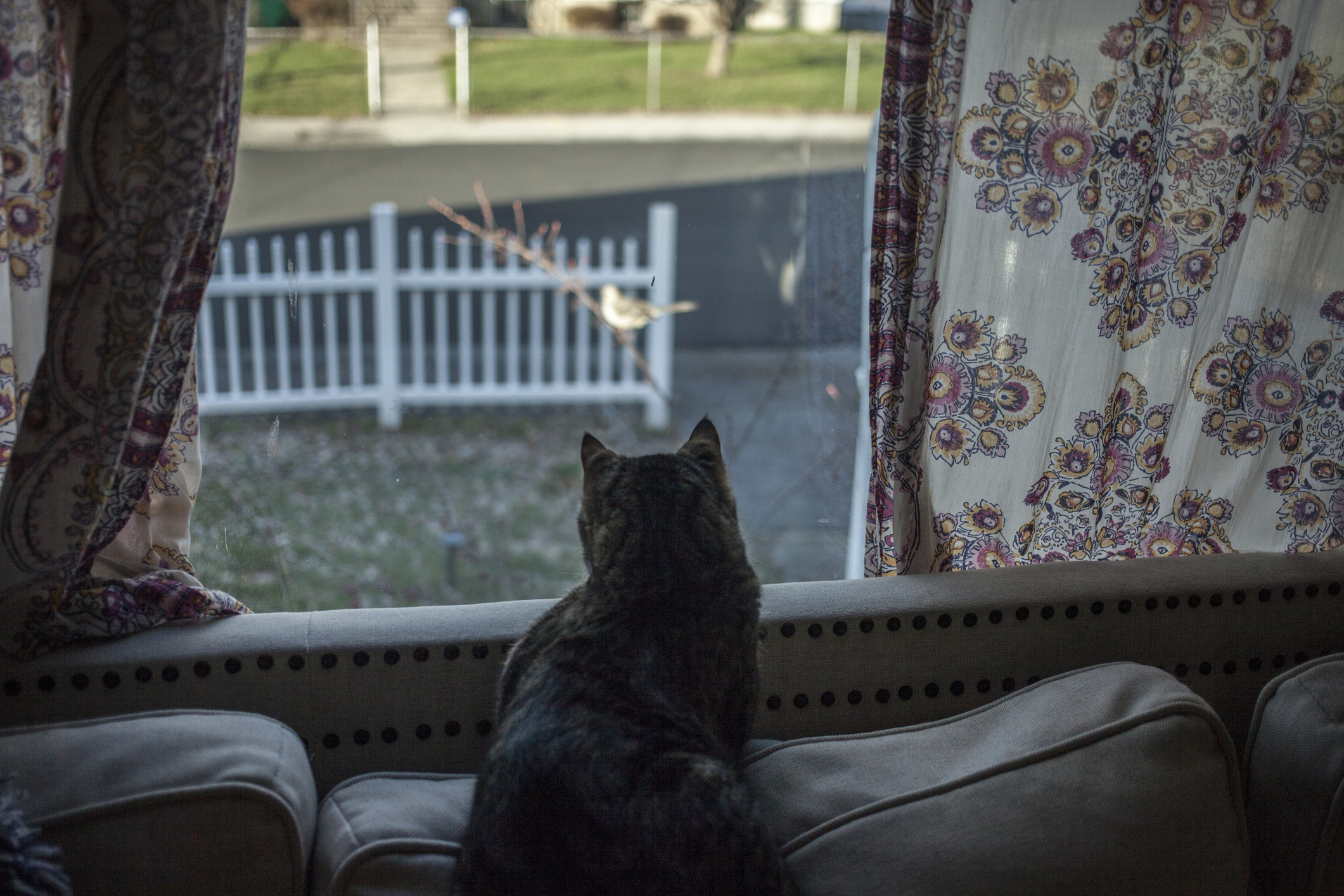

We may earn revenue from the products available on this page and participate in affiliate programs. Learn More ›
Depending on where you live, you might catch a glimpse of birds either leaving your area, flying overhead en masse, or settling down in your yard. October is the heart of the fall migration season, which runs from August 1 to November 15. During this time, billions of birds collectively fly billions of miles south in search of food and warmth.
This is a wonderful time for birdwatching and attracting more birds to your yard. You can track migration patterns in your region by using BirdCast’s migration tools. However, this journey is physically challenging and can be dangerous for the birds; some won’t make it. Habitat loss, unpredictable weather conditions, and large structures like buildings and towers can hinder their critical flight.
A major factor in a bird’s journey is light pollution. Migrating birds use the natural moonlight and starlight to navigate their flight patterns, so artificial lights can be problematic, causing them to wander off course and get lost. Sadly, each year during this time, millions of birds fall to their death after colliding with illuminated buildings. Additionally, birds rely on natural lighting to properly time their migration schedule. Artificial lights can mess this up, causing birds to migrate either too early or too late, which disrupts important behaviors like nesting, foraging, sleep, and protection from predators.
Learn what you can do at home to help birds during their migration, including joining a “lights out for birds” campaign.

Joining the DarkSky “Lights Out” Campaign
The mission of DarkSky International is to restore the nighttime environment and protect communities from the harmful effects of light pollution. The organization, along with other groups like The National Audubon Society, encourages residents to go “lights out” from dusk until dawn during migration season to protect more birds.
The idea is to turn off unnecessary lights during this time so that migrating birds can rely on natural light and not get confused or distracted by artificial light. You can turn off your inside lights manually and make sure external lighting is either off or has a shield. Consider setting timers to make it easier. These simple actions help protect birds and reduce your home energy consumption.
How to Adjust Your Lighting
Besides going dark from dusk until dawn, there are other important steps you can take to adjust your lighting to be friendlier to birds. DarkSky and the Illuminating Engineering Society developed Five Principles for Responsible Outdoor Lighting to “prevent and reduce light pollution through the proper application of quality outdoor electric lighting,” according to the DarkSky website. Apply these principles to your home’s lighting plan to help keep lights out for birds and minimize wildlife disruption.
According to the principles, responsible outdoor lighting is:
- Useful: Use light only if it is needed. Lights should have a clear purpose to weigh against how they might impact the area, including wildlife and their habitats.
- Targeted: Direct light so it falls only where needed. Use shielding for lights and aim them so the direction of the light beam points downward and does not spill beyond where necessary.
- Low level: Light should not be brighter than necessary. Use the lowest light level required and check for light reflection on surfaces to minimize it.
- Controlled: Use light only when needed by installing controls such as timers, dimmer switches, and motion detectors. Make sure that security lighting has motion sensors.
- Warm-colored: Use warmer color lights like white and yellow where possible and limit the amount of shorter wavelength blue-violet lights. Choose only lighting with a color temperature of 3000K and below to reduce the blue cool light that is more harmful to wildlife.
If you’re not sure which lights to install on your property, check DarkSky’s database of approved products for residential lighting.

7 More Ways to Help Migrating Birds
Migrating birds face many obstacles and challenges during their journey. Here are some actions you can take to make it easier for them and to welcome plenty of birds to your yard as a rest stop.
- Protect birds from window collisions. Audubon estimates that between 100 million and 1 billion birds die from flying into clear or reflective glass each year. Help prevent this from happening by placing decals on your windows, such as films with dots on them, strips of translucent tape, or UV stickers. Some people paint windows or hang streamers, beads, or handmade bird decorations to prevent strikes. Make sure the gaps between each decal are not larger than 2 by 4 inches.
- Provide food they love. Stock bird feeders with their favorite foods, such as sunflower seeds, peanuts, suet, mealworms, millet, and nyjer. If you have a nectar feeder, keep it fresh. To attract more birds, consider adding additional feeders to your yard during this migration period.
- Offer plenty of water. Migrating birds are attracted to the sound of running water, so keep your bird baths fresh and install an electric mister or bubbler.
- Make shelter accessible. Keep fallen leaves on the ground during this time since some birds will use leaf litter and piles as shelter. You can also make brush piles for birds by gathering fall clippings of branches and twigs and piling them up in a corner of your yard. Finally, clean out any birdhouses so birds can easily get in and set up their nest.
- Choose native plants. Planting native flowers, trees, and shrubs—especially those that produce seeds, berries, and fruit—helps attract a variety of birds to your yard since they provide essential food and habitat. Visit the National Wildlife Federation’s Native Plant Finder for details.
- Avoid pesticides. Don’t use pesticides in your yard since they can harm birds visiting your garden.
- Keep pets away. To attract more birds and make sure they are safe when in your yard, keep pets, especially cats, indoors or supervised when outdoors. Individual cats typically kill 55 birds every year, and all cats kill about 2.4 billion birds annually in the United States.

